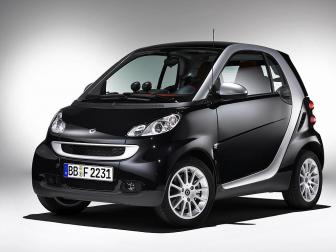
Cars are major contributors to environmental pollution because of carbon emissions. They chew gas, a non-renewable resource. But cars are the backbone of modern living and life without them is unthinkable. Eco cars use is about striking the best possible compromise. Hybrid and other eco cars are a step in the right direction but we still have the problem of trillions of j ourneys where a four seater car only contains the driver. Enter the Smart Car.
Until the Smart car came along the only motorized transport available that was designed for one to two people only was the motorbike – not most people’s first choice. The Smart Car is a microcar that seats two and is just the thing for people who seldom have passengers, drive short distances only and/or live in cities. Thanks partly to the Smart Car’s image as green, trendy and contemporary, it’s a twenty-first century phenomenon that’s been growing since the first Smartfortwo was unveiled in 1998.
It’s one of the simplest eco cars solutions yet rolled out. The original model had an engine capacity of 599 cc, with obvious implications for reducing fuel consumption. That went up to 999 cc in the second generation range. The first generation ran on a standard petrol engine, but in the last few years a fully electric model has been available. Diesel models were added to the range. The Cdi (diesel) model has the lowest carbon emissions of any vehicle. With fuel consumption at a relatively tiny 3.3 liters per 100 kilometers, its carbon emissions stand at only 88 grams per kilometer. It’s not clean but it’s a lot cleaner than most.
Lower fuel consumption, fewer emissions and the reduced carbon footprint of manufacturing small cars are only part of the Smart Car success story. The second generation Smartfortwo is only 2.69 meters, which makes it ideal for parking in crowded cities. In theory it can park perpendicular to the sidewalk instead of parallel, though this is banned in many cities. Still, if Smart Cars were the dominant vehicle in our cities, we could cut car parks by around half. Smaller cars would also mean less nose-to-tail traffic in city streets.
The Smart Car is not going to satisfy the petrolheads, but its no slug in the performance department, and in congested cities where traffic crawls along, top speeds aren’t really a priority. The vehicle has had some design issues with its relative safety, due to its small front crumple zone and other problems, but for city driving it’s still a top option.
Green driving went good looking with the stylish design of the Smart, and some models even have interchangeable panels for trendy personalization. It’s a great car for trendy people who want eco cars with style and has enjoyed rising sales year on year worldwide. The Smart is almost an artwork in progress, and could be the first wave in the eco cars of the future.

